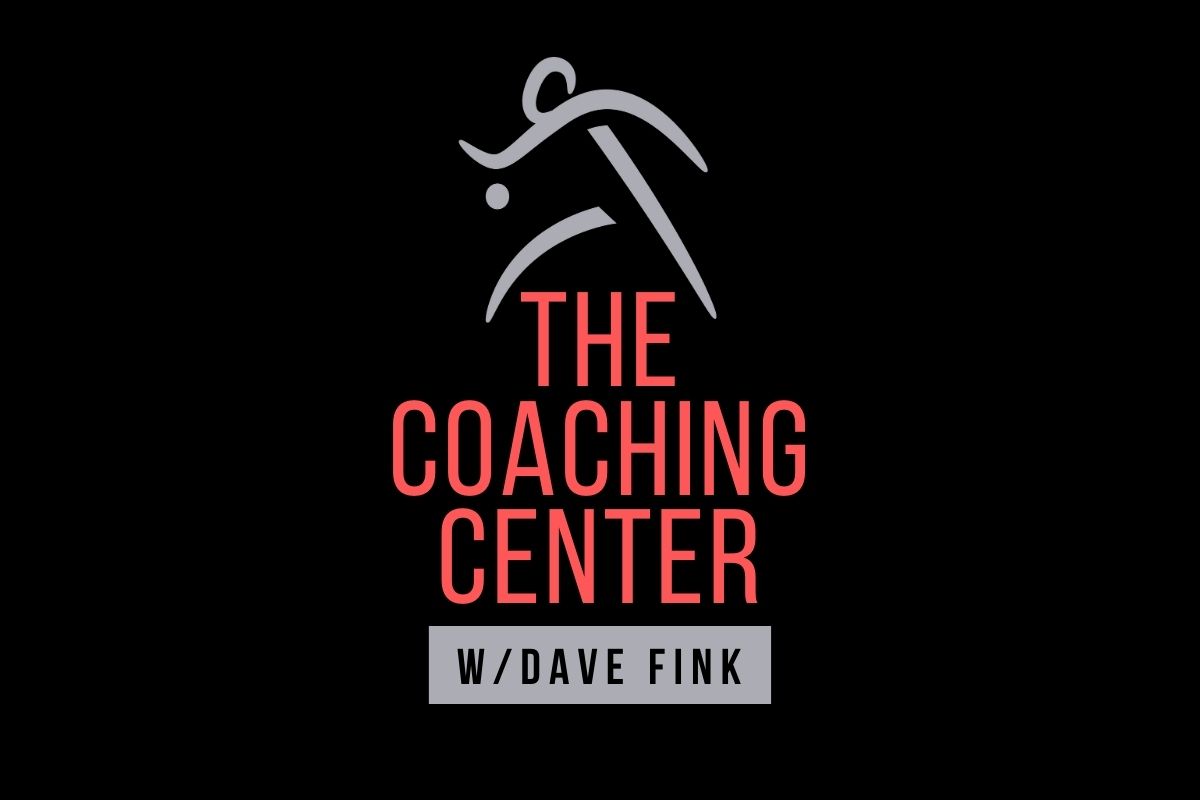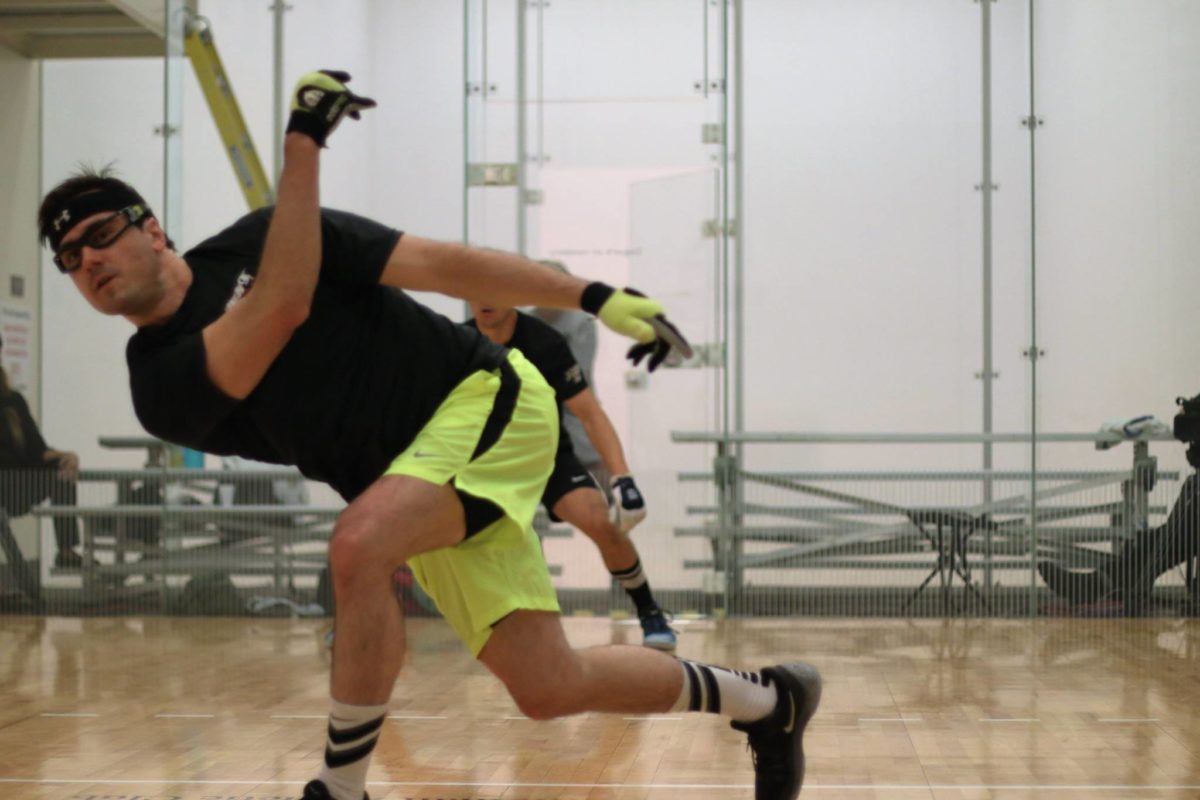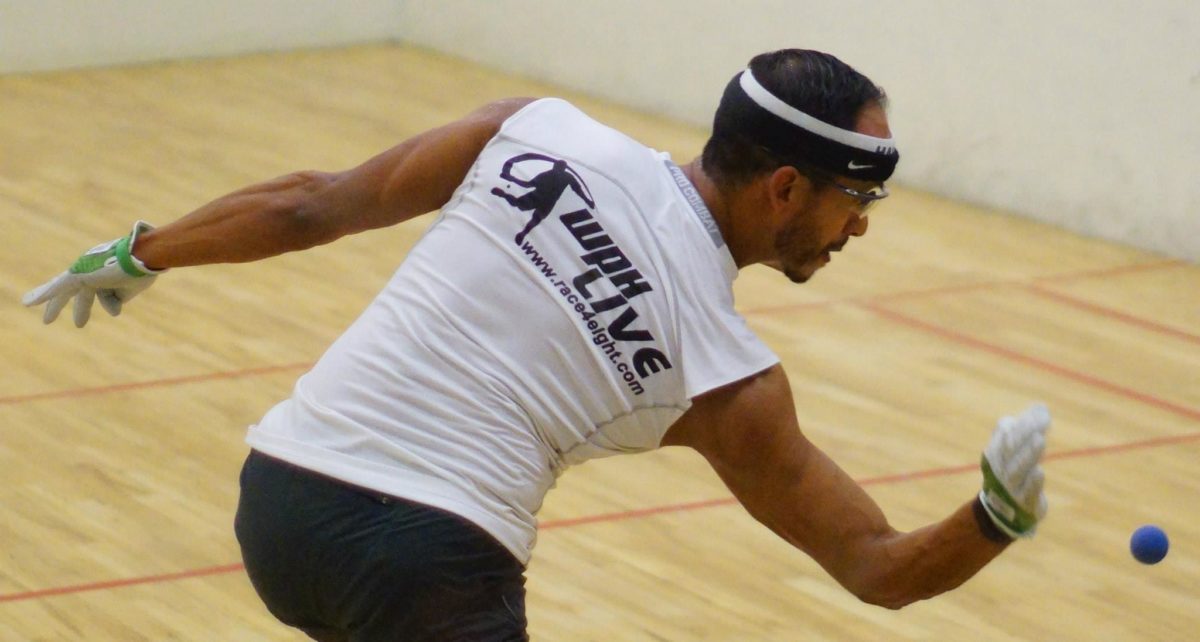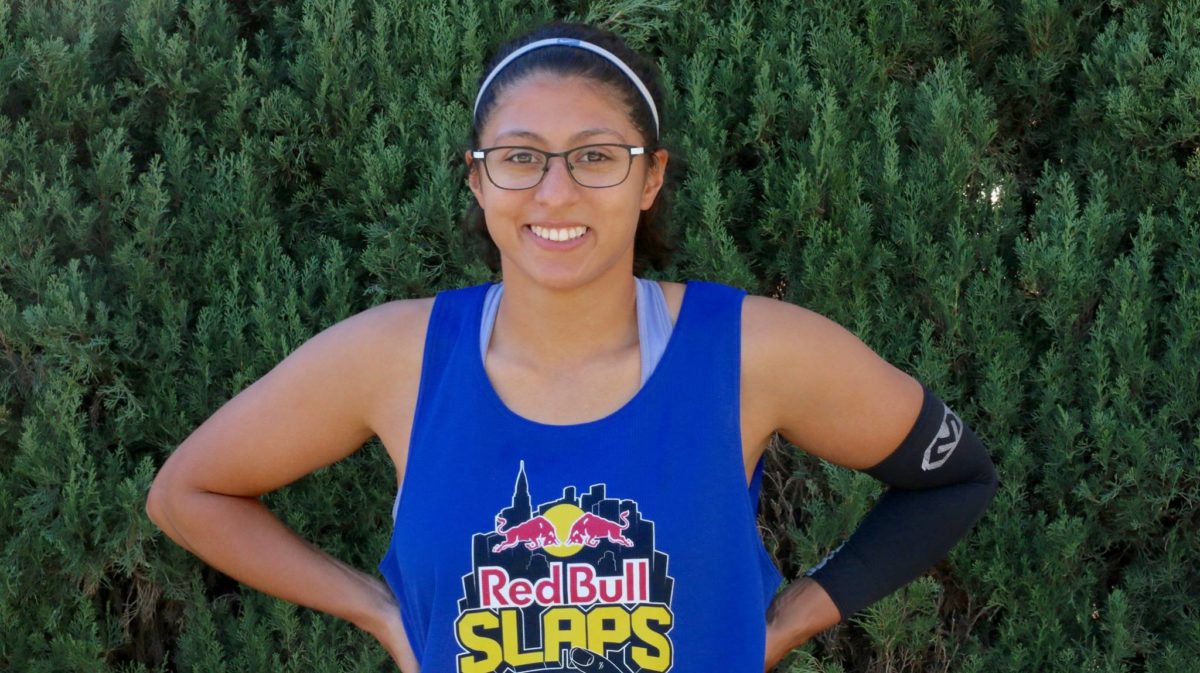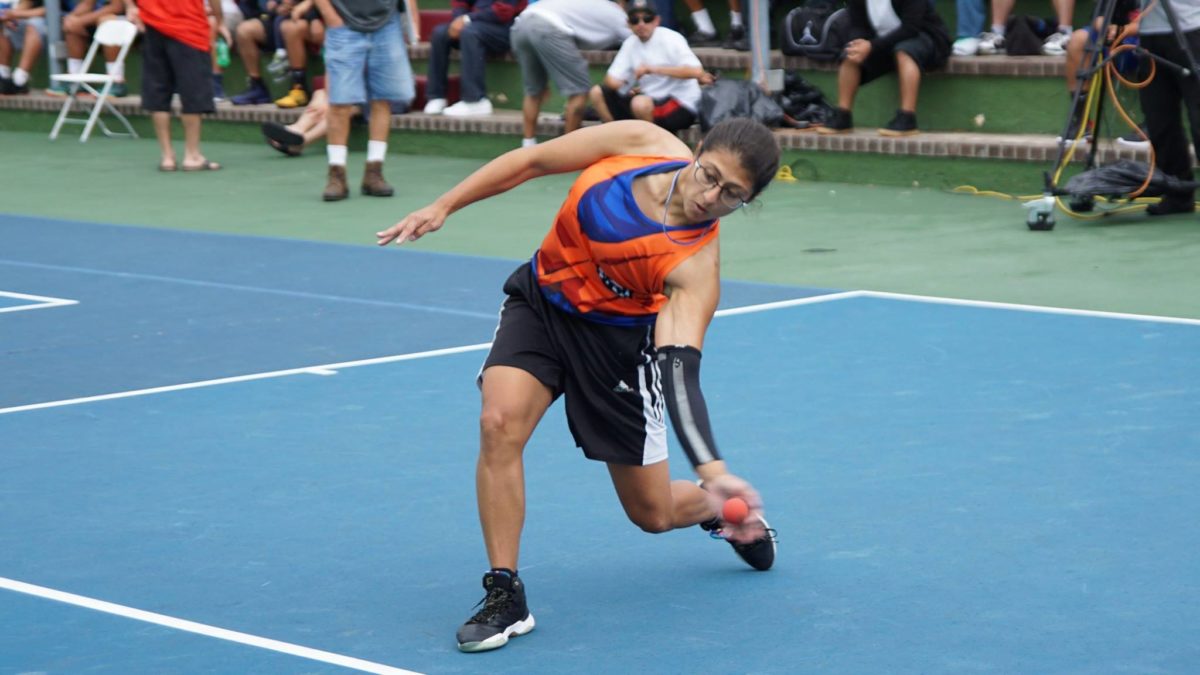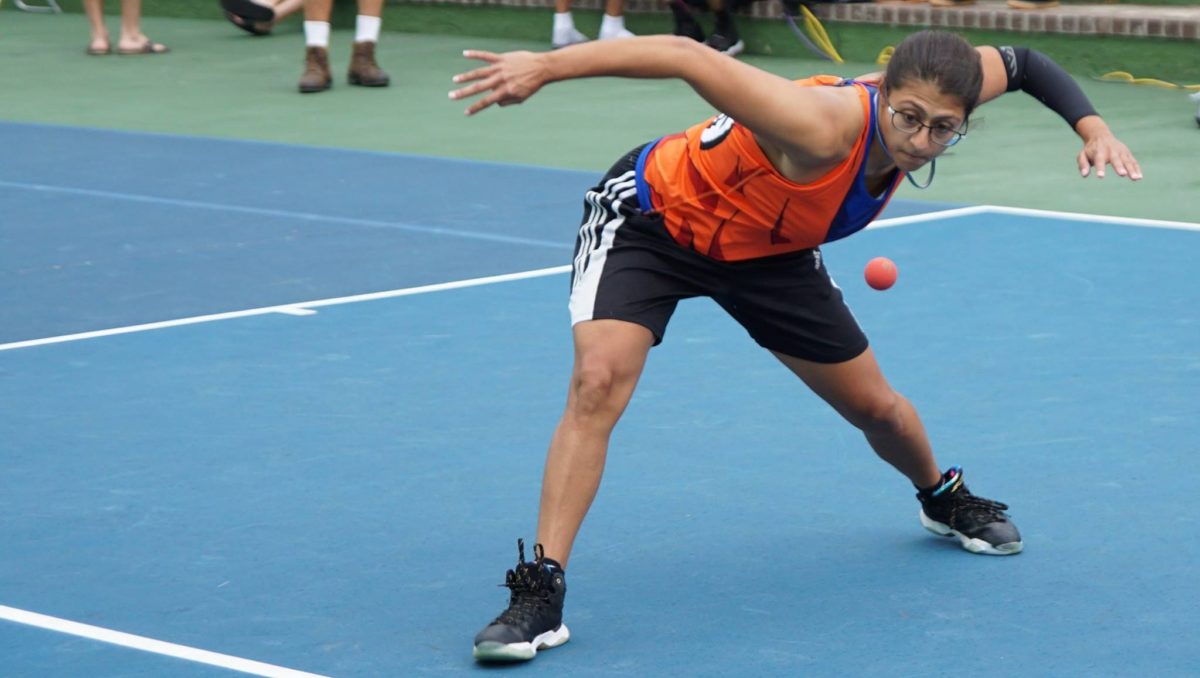The Coaching Center w/ David Fink: The Sidearm Kill
WPH Press, 12/1/20
The WPH Coaching Center has discussed Coaching, How to See a “Fast Ball,” The Six Walls, The Most Important Shot, The Diet, What Separates Paul Brady, The 3-Wall Power Serve and much more. The WPH Coaching Center will continue to examine the various strategies and shots that will make you a better handball player, as this week’s WPH Coaching Center will analyze the Sidearm Kill.
The Sidearm Kill, also known as the whip, is struck with a loose arm and wrist, and is intended to hit the ball hard and low, with the goal of ending the rally. The Sidearm Kill is best struck while facing the shoulders, feet, and shoulders parallel to the side wall, making the swing more linear, while transferring the weight from the back foot to the front. Traditionally, players were taught to strike the Sidearm Kill as low as possible, around knee level or lower. Modern pros have debunked that contact point to some degree, as many of today’s pros are able to hit sidearm kills from waist level, or (gasp), even shoulder level.
The Sidearm Kill is the most exciting and devastating shot in handball, but how do you hit it? WPH Coaching Panel pros and legends Naty Alvarado, Jr. Emmett Peixoto, and Danielle Daskalakis take us through the how and when to hit this powerful and exciting shot.
How to Hit the Sidearm Kill
Hitting the Sidearm Kill requires tremendous timing and proper technique. Let’s learn from the game’s best to perfect your Sidearm Kill.
Emmett Peixoto
To kill a sidearm shot consistently you should attempt to take the ball as low as possible. Let the ball drop. Doing this will allow you to simply hit the ball straight ahead of you for the kill. If you take the ball higher than you have to aim the ball down, which can lead to inconsistency in your ability to kill the ball (in both the sense of good days vs. bad days and magical vs. depressing moments in a game.) If, however, getting low is not an option for you for whatever reason here are four quick tips you can carry with you to aid in your ability to a sidearm kill consistently:
1) Close off your stance, meaning, your feet and hips should be facing perpendicular to the front wall when you start your swing
2) always push your weight over your front foot (be confident in the shot, do not back away)
3) lead with your elbow, basically attempting to “point” the elbow of the hitting arm to the target as you swing
4) let your non-swinging arm swing toward your target and then away from your body to open up your body for the swing.
Naty Alvarado, Jr.
I believe everyone understands that the optimum kill shot is when the ball is placed somewhere between your shin and knee or depending on the flexibility, your ankle and shin while you set your feet similar to a 2nd baseman throwing to first base. If you can synchronize these two essential elements to a kill shot strike, you are guaranteed to send the ball into a scoring position.
The kill shot and trajectory changes: As a teenager, I watched my dad get parallel to the floor on his kill shot attempts. I always thought that the only way to have a proper kill shot was being as close to level to the floor. So that meant working a rally for a longer period of time until you got the optimal striking coordinates to murder your ball into the low line of the concrete front wall. Fast forward to 1991, along comes young phenom handball player named Octavio “Tati”Silveyra I didn’t know Tati at all until Tony Huante brought Tati, Vince Munoz, and Richard Valenzuela up to the High Desert to train with El Gato. I wasn’t good enough to play with that foursome on that first visit but I did get to know them better.
Tati and I would cross pass on the Southern California Amateur Handball Tournament circuit from time to time developing a friendship and trust between each other. But the point of this story is more about the kill shot trajectory. The traditionalist will state that you need to work the volley and stay as close to parallel as possible on your kill shot attempts. But after spending some time on the court with Tati I learned that the kill shot trajectory can also be in a slightly upright position striking the ball at a descending blow while the ball is on its early up bounce trajectory. Almost as if you’re using the ball’s energy to send it back with such a velocity that the ball appears to hopscotch off your hand back to the low line concrete target. I also found success with an upright pass shot catching the ball on an up bounce. This is still one of my favorite shots in handball.
I understand that not everyone has the ability to take these trajectory changes due to their physical make up but both forms allowed for a number of successful Handball outings.
Danielle Daskalakis
Cues for a sidearm kill:
Lower body:
Turn sideways
Knees bent in a lunge
At point of contact with the ball:
Front foot steps towards the ball
Back foot pivots towards the ball
Same side Hip twist towards the ball
Upper body:
Palm faces the ball
Arm is in an “L” shape position parallel to the ground
Point of contact:
Arm should be at knee level to the ball
Contact with the ball is made at a 45-degree angle as the foot steps forward to transfer weight from the pivot foot to the front foot
Your legs and hips are doing the majority of the work for a sidearm kill, which is why the positioning of the hips and legs is so important. Your arm acts as a guide for the ball and your palm is slightly cupped while facing the ball. The less power you put into the swing, the better the kill.
Carl Obert always used to tell me to “bite the ball”. This means keep your head down for the entirety of the swing as your arm follows through to your non-hitting shoulder.
For an effective sidearm kill, hip flexibility and hip flexor stability is very important. Additionally, training your glutes, legs, and lower back will be extremely important for the effectiveness and longevity of this skill.
Danielle Sidearm Kill Drills
Cesar Sala used to have us do drills at Coney Island, where we would stand at the short line with the ball on the line. We start the drill already in a lunge (sidearm kill position) and we then bring our arm down to the ground in that “L” shape that I mentioned earlier. Our hand touches the ground as we practice scooping the ball off the ground and towards the wall. This helped us get used to bending our hips and have an easier time getting into sidearm positions.
When to Hit
If you are an offensive juggernaut like Mando Ortiz, the when you hit the Side Arm Kill may be when you enter the front door of the club. For the rest of us, you need to wait until you have your opponent behind you and the ball has dropped below your waist.
Danielle Daskalakis
Sidearm kills are more useful when you’re in front of the court and you have effectively pushed your opponent towards the back of the court or off the court. Some effective strategies for this are working on effective serves that will allow for weak returns OR effective passing shots that also provide weak returns.
The sidearm kill is definitely one of my personal favorite shots to go for and it’s glamorous but be smart when using it. If you’re trying to hit a sidearm kill, while your opponent is in front of you, statistically that is a lower percentage chance of winning the volley. Your opponent will be closer to the wall and ready to retrieve the ball if it’s not hit perfectly flat.
WPH Sidearm Swing Kill Shot Highlights from the WPH Produced Handball 101: Handball Terminology at the 2:00 mark HERE
Thank you to the incredible WPH Coaching Panel for teaching us the secrets to the Sidearm Kill. Remember, get low, strike low, and hit low!
David Fink
WPH Senior Writer










